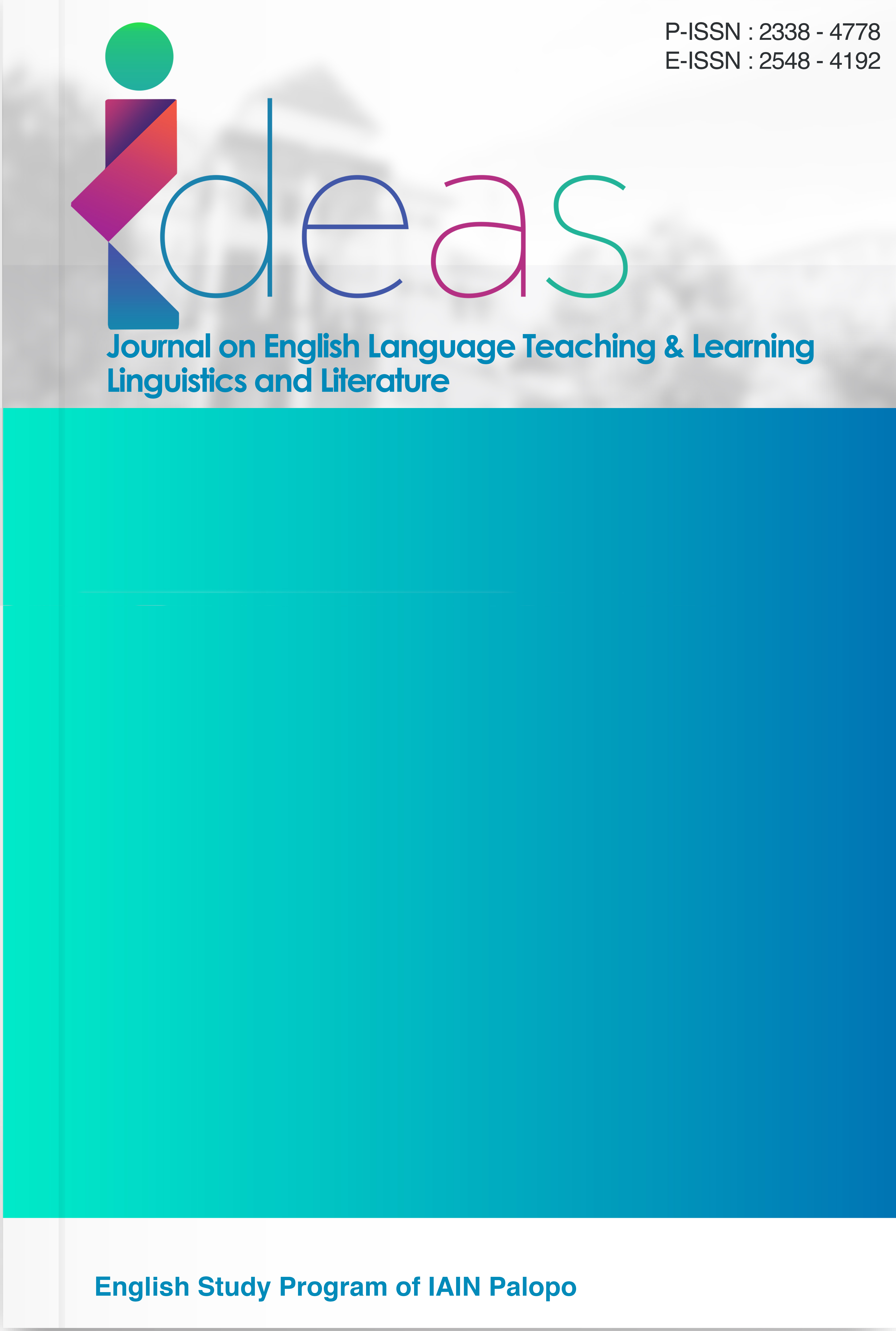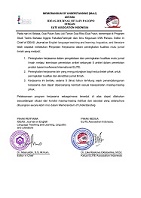Slang Words Used in Dope Movie
DOI:
https://doi.org/10.24256/ideas.v13i2.7535Keywords:
Sociolinguistics; Slang Words; Dope; Movie; Urban language; African-American youth.Abstract
This study examines the types and meanings of slang words used in Rick Famuyiwa's "Dope" movie (2015), and the research addresses the gap in understanding community-specific communication patterns by analysing authentic teenage dialogue through the theoretical framework for slang classification proposed by Allan and Burridge (2006). This study used qualitative descriptive methodology to identify and categorise slang expressions from the film's dialogue and transcript. The analysis identified 91 slang words, which were classified into five types: flippant, fresh and creative, imitative, clipping, and acronym. Flippant, fresh and creative slang indicates that characters use language that is innovative and different from standard meanings, reflecting the dynamic nature of urban youth communication. Slang is employed to establish interpersonal relationships, create group identities and express emotions. The findings contribute to an understanding of how slang is used in media representations, enriching the knowledge of youth culture and its application in film.
References
Allan, Keith, and Kate Burridge. 2006. Forbidden Words: Taboo and the Censoring of Language. New York: Cambridge University Press.
Burdová, Bc Veronika, and Mgr Radek Vogel. 2009. “Student Slang.” Masaryk University In Brno.
Cambridge Dictionary. 2021. “Slippery Slope.” https://dictionary.cambridge.org/dictionary/english/slippery-slope.
Chomsky, Noam. 2000. New Horizons in the Study of Language and Mind. Cambridge University Press.
Creswell, John W., and J. David Creswell. 2018. Research Design: Qualitative, Quantitative, and Mixed Methods Approaches. Fifth. SAGE.
Dictionary. n.d. Retrieved July 1, 2025. https://www.dictionary.com/e/slang/.
Dula, Gloria Stefan E. 2024. “An Analysis Of Slang Found In The Movie Entitled Dumb And Dumber.” Proceedings Literates, Linguistics, Literature, Culture, and Arts 128–36.
Famuwiya, Rick. 2015. Dope. United States: Sony Pictures Home Entertainment.
Holmes, Janet. 2013. An Introduction to Sociolinguistics. Fourth. Routledge.
Keraf, Gorys. 2010. Diksi Dan Gaya Bahasa. 17th ed. Jakarta: PT Gramedia Pustaka Utama.
Krippendorff, Klaus. 2004. Content Analysis: An Introduction To Its Methodology. Second. Sage.
Mattiello, Elisa. 2008. An Introduction to English Slang. Italy: Polimetrica.
Merriam-Webster. n.d. “Dictionary.” Retrieved July 1, 2025. https://www.merriam-webster.com/slang.
Miles, Matthew B., and A. Michael Huberman. 1994. Qualitative Data Analysis. Second. US of America: SAGE.
Munthe, Presly Rosalina, M. Bahri Arifin, and Ririn Setyowati. 2023. “An Analysis of Slang Words In IT Movies.” Ilmu Budaya: Jurnal Bahasa, Sastra, Seni, Dan Budaya 7(2):627–36.
Rachman, Tia Novana. 2020. “Slang Expressions in Subtitle Text of The Three Transformers Movie. ‘The Transformers’, ‘Transformers: Revenge of The Fallen’, and ‘Transformers: Dark of The Moon.’” State of Islamic University Sunan Gunung Djati, Bandung.
Urban Dictionary. n.d. Retrieved July 1, 2025. https://www.urbandictionary.com/.
Wardhaugh, Ronald, and Janet M. Fuller. 2015. An Introduction To Sociolinguistics. Seventh. Wiley Blackwell.
Downloads
Published
Issue
Section
Citation Check
License
Copyright (c) 2025 Hanifa Fildza Ghassani, Otong Setiawan Djuharie, Toneng Listiani

This work is licensed under a Creative Commons Attribution-ShareAlike 4.0 International License.
Authors retain copyright and grant the journal right of first publication with the work simultaneously licensed under an Attribution-ShareAlike 4.0 International (CC BY-SA 4.0) that allows others to share the work with an acknowledgement of the work's authorship and initial publication in this journal.
Authors are able to enter into separate, additional contractual arrangements for the non-exclusive distribution of the journal's published version of the work (e.g., post it to an institutional repository or publish it in a book), with an acknowledgement of its initial publication in this journal.
Authors are permitted and encouraged to post their work online (e.g., in institutional repositories or on their website) prior to and during the submission process, as it can lead to productive exchanges, as well as earlier and greater citation of published work (See the Effect of Open Access)




